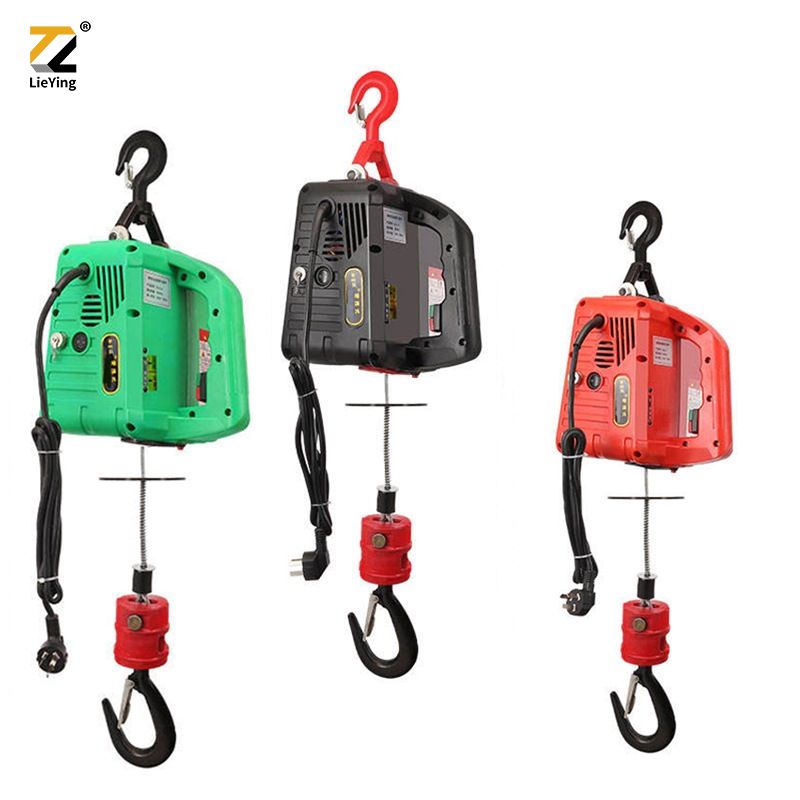Electric Hoist: What Is It? How Does It Work?
Electric hoists are powerful and versatile lifting machines that are widely used across various industries. Unlike manual or hydraulic hoists, electric hoists are equipped with an electric motor that provides the necessary force to lift and move heavy loads with ease. In this article, we will delve into the intricacies of electric hoists, exploring their advantages and understanding how they work.
Advantages of Electric Hoists
1. Superior Performance and Efficiency:
One of the significant advantages of electric hoists is their exceptional performance and efficiency. Powered by an electric motor, these hoists offer a consistent and reliable lifting capability, ensuring smooth and precise operation. With the ability to lift heavy loads effortlessly, electric hoists significantly reduce manual labor and increase productivity in various industrial applications.
2. Increased Safety and Control:
Electric hoists are designed with safety as a primary concern. They are equipped with advanced safety features such as overload protection, emergency stop buttons, and limit switches to prevent accidents and ensure operator safety. Additionally, electric hoists provide precise control over the lifting process, allowing operators to maneuver loads with accuracy, minimizing the risk of damage to objects or injuries to personnel.
3. Versatile Applications:
Another notable advantage of electric hoists is their versatility. These hoists find applications in diverse industries such as construction, manufacturing, warehouse operations, and even in residential settings. They can handle a wide range of loads, from small and delicate items to heavy machinery, making them an indispensable tool in various lifting and moving tasks.
4. Cost-effective Solution:
Electric hoists offer a cost-effective solution compared to hydraulic or manual hoists. Although the initial investment might be higher, electric hoists require less maintenance and have a longer lifespan. Additionally, the ease of use and higher efficiency of electric hoists contribute to increased productivity, leading to cost savings in the long run.
How Does an Electric Hoist Work?
1. Electric Motor Power:
The heart of an electric hoist lies in its electric motor. When activated, the motor generates rotational force that gets transmitted to a gearbox. The gearbox converts the rotational force into a linear motion, enabling the hoist to lift and lower loads.
2. Control System:
Electric hoists incorporate a control system that allows operators to control the lifting process. This system typically includes buttons or switches, enabling precise control over lifting speed, direction, and stopping mechanisms. The control system ensures smooth and efficient operations while maintaining safety.
3. Lifting Mechanism:
Electric hoists employ various lifting mechanisms, depending on the specific application requirements. The most common types include wire rope hoists and chain hoists.
- Wire Rope Hoists: These hoists utilize a steel wire rope wound around a drum. When the electric motor rotates the drum, the wire rope either extends or contracts, resulting in the lifting or lowering of loads.
- Chain Hoists: Chain hoists operate by lifting loads using a chain looped around a pulley. The electric motor drives the pulley, causing the chain to move and lift the load.
Conclusion:
Electric hoists are indispensable tools in the industrial world, offering numerous advantages such as superior performance, enhanced safety, versatility, and cost-effectiveness. By understanding their operation, we can harness the full potential of electric hoists and maximize their efficiency in various lifting and moving applications. Whether it's heavy machinery in a construction site or delicate items in a warehouse, electric hoists prove to be reliable and efficient solutions for a wide range of tasks.
So, if you are looking for a high-quality electric hoist that combines power, safety, and versatility, consider investing in an electric hoist today!

评论
发表评论